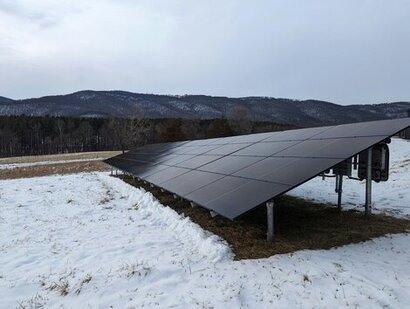
Solargis’ Winter Solar Performance maps show that high aerosol levels are having a direct impact on the performance of solar projects in the region. Solargis’ monthly Global Horizontal Irradiance (GHI) map for January 2024 shows substantial drops – between 30 percent and 50 percent - compared to long term averages.
This continues a longer-term trend of Winter underperformance in Northern India, which has seen significant dips in irradiance occur in each of the last five Winters.
In addition to this recurring pattern of Winter underperformance in the North, operators in central India have faced a long-term trend of below average irradiance, stretching back over the past 6 years. Solargis’ 2023 Indian solar performance maps show a dip of between 1 percent and 5 percent compared to the average across central India – attributed in part to the prolonged monsoon season.
“January 2024 saw records broken for both the lowest average monthly temperature and lowest GHI” said Avik Mitra, Business Account Manager, Solargis. “This had tangible impacts on the financial performance of solar projects across Punjab, Haryana, and Uttar Pradesh, which collectively host around 5 GW of installed capacity, but this has not been an isolated event. There is an increasing need for Indian operators to move beyond hourly Typical Meteorological Year (TMY) data and towards higher resolution sub-hourly Time Series for more reliable performance evaluation. This allows analysis of solar power production in extreme weather, like severe fog and smog, and enhances understanding of PV plant behaviour.”
To help the industry better understand and mitigate the impact of these resource challenges, Solargis is working with a number of leading solar PV firms in India, including candi solar, which has recognised the need for more dependable sources of irradiance data to pinpoint and address underperformance.
“We’ve grappled with identifying the root causes of underperformance for our projects in India and recognised the need for accurate yield information” added Chris Brosz, Head of Engineering at candi solar. “Relying on robust and high-quality data has enabled us to optimise our project performance and build a scalable platform.”
Simultaneously, Indian solar developers are investing in higher quality data to understand long-term irradiance trends and the future performance of increasingly complex renewable energy assets. The Indian market has moved from 100 percent solar tenders to hybrid tenders incorporating both battery energy storage and wind energy, demanding a better understanding of how performance will be influenced by changing weather patterns.
“Often these hybrid tenders require matching generation profiles with load profiles, and there are penalties for not doing so” Mr Mitra said. “This has increased the need for developers to better grasp solar variability - both at intra-day and seasonal levels - and diversify their portfolios to manage financial risk.”
For additional information:

